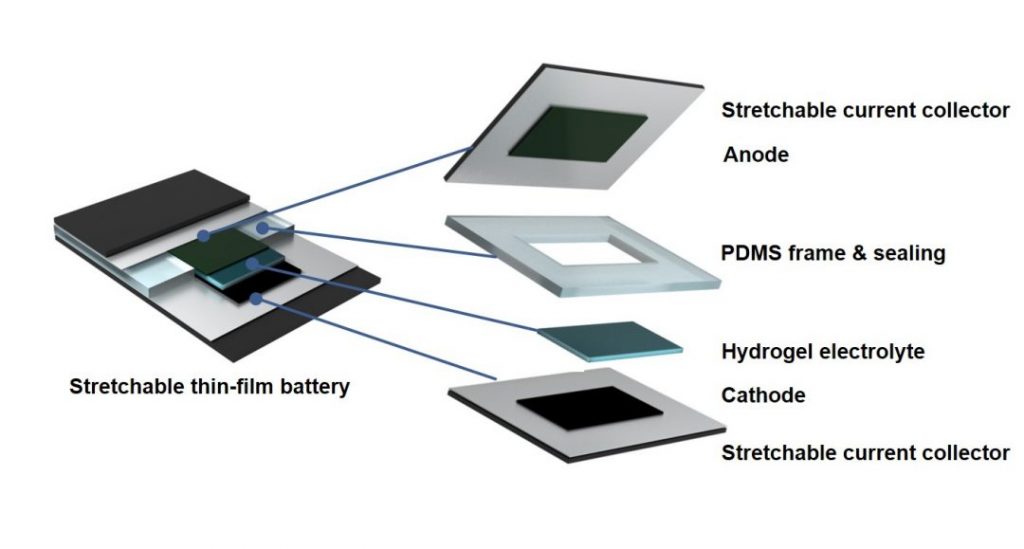Flexible electronic devices are becoming more and more popular, with examples of TVs, computers, and smartphones that can be folded or rolled, and reports of wearable micro-devices or sensors that can be integrated into our clothes, already hitting the market. While these devices are seemingly the future of electronics, they are still hindered by the fact that in many cases, energy supply still relies a socket or a heavy and rigid battery.
Now, researchers at ETH Zurich have developed a prototype for a flexible, thin-film battery that can be bent, stretched, and even twisted, all made possible by a new hydrogel electrolyte.
This new type of battery is built in layers, just like conventional batteries. However, in this case, the researchers have exclusively used flexible components. It consists of the novel electrolyte and two current collectors for the anode and the cathode. The collectors are made from bendable polymer composite that contains electrically conductive carbon, which also serves as the outer shell.

The Swiss researchers applied a thin layer of micron-sized silver flakes to the interior surface of the composite and then sprayed anode and cathode powder onto a defined area of the silver layer. In the final step, the scientists stacked the two current collectors with the applied electrodes on top of one another, separating them by a barrier layer similar to a picture frame, and filled the gap in the frame with the electrolyte gel.
Markus Niederberger, professor of multifunctional materials at ETH Zurich, explained: “Flexible electronics have to be powered by flexible batteries. However, traditional batteries are rigid and stiff. To make them bendable and stretchable, not only every component like cathode, anode, current collector, electrolyte, and housing has to be made flexible, but also their interfaces have to be optimized to prevent delamination during stretching.”
More research is needed to optimize this initial prototype, with initial plans aimed to increase the amount of electrode material that the battery can hold, thus improving capacity and lifetime.
With countless commercial applications on the horizon, it will indeed be interesting to see where this innovative new technology can take us.

















